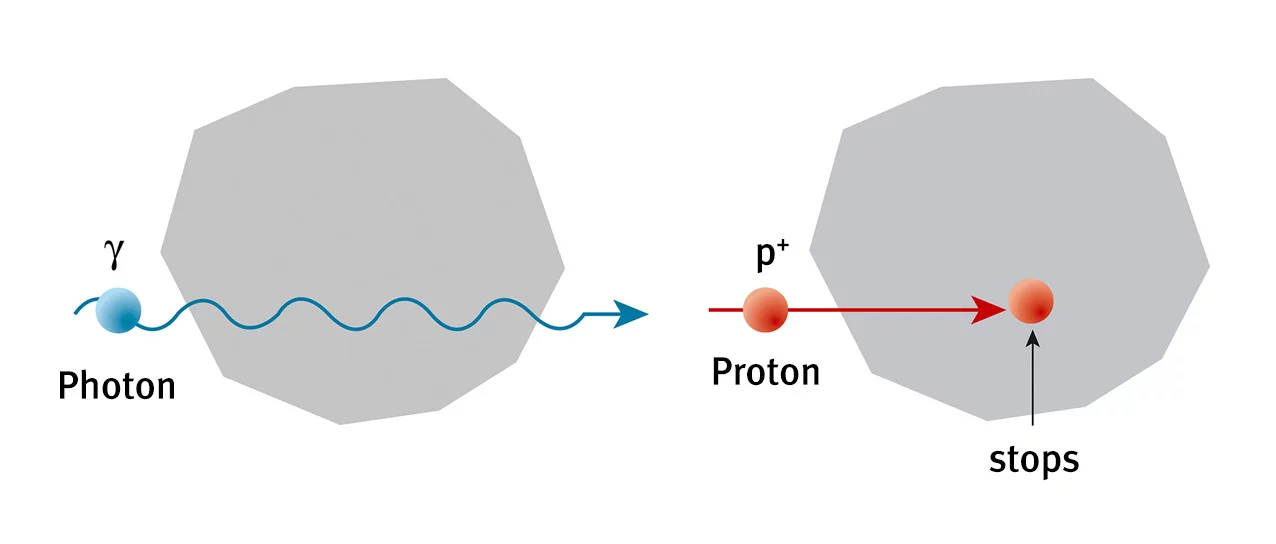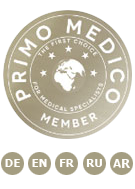Proton therapy is a radiation therapy for the destruction of tumor tissues with charged particles, the protons. Protons are especially effective for this purpose, because they release their greatest energy in the depths of the body, within the tumor itself.
What are Protons?
Protons are one of the building blocks of atoms. All matter surrounding us is made up of atoms. Their nuclei comprise varying numbers of positively charged protons and neutrons with a neutral electric charge. Surrounding the nucleus is an atomic shell consisting of negatively charged electrons. Like all particles with an electric charge, protons can be directed, bundled and formed into a beam using a magnetic field.
The effect of protons
The proton range depends on the capture cross-section and the material with which the protons interact as they are slowed down. Photons deposit radiation dose as they penetrate through the body. Thus, healthy tissues in the path of the beam are also irradiated. In the case of proton beams, the protons decelerate continuously between the surface of the body and the point at which the beam is stopped. Therefore, tissues in the beam path absorb only a small dose relative to photon beams. At the end of the range, the protons are stopped and transfer a large amount of energy to the tissue. This gives rise to a peak in the dose that is termed the Bragg Peak. Beyond this depth the dose deposition falls to zero within millimetres.
In this way, the proton beams can be generated to deposit the highest radiation dose in the tumour, in a small volume or a spot at the end of the beam range. Thus, they irradiate less healthy tissues in the path of the beam than in treatments with photon beams.
In the following graphic, the dose distribution for a single pencil-thin proton beam is shown. The horizontal axis in the lower part of the graphic indicates that, in this example, the protons penetrate 25 cm into the body. It can also be seen that the protons deliver a significantly lower dose to the healthy tissue in front of the target volume (i.e., the tumor) compared to photons. Behind the target volume, healthy tissue is substantially irradiated when photons are used, whereas with protons it is not irradiated at all.


